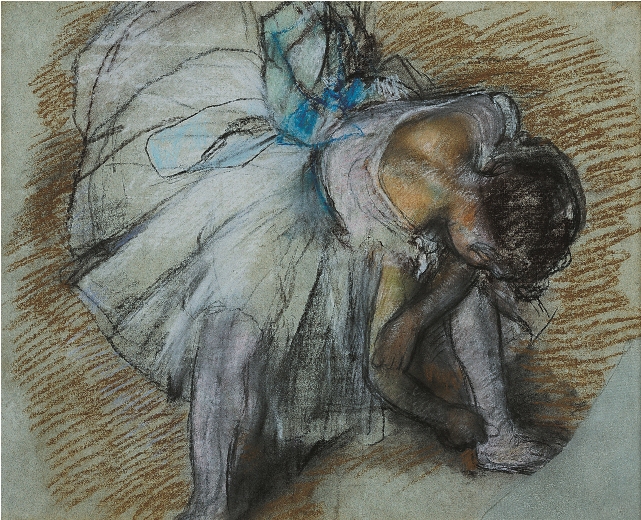
Hilaire-Germain-Edgar Degas, Dancers in Rose, c. 1900. Pastel on paper, 33 1/8 x 22 7/8 in. Museum of Fine Arts, Boston. Seth K. Sweetser Fund.
Because I work in pastels, I am particularly interested in seeing how other artists use this often underappreciated medium. Our current Degas exhibition features numerous works by the artist in pastel.
What were some of the qualities that attracted Degas to pastels? Unlike oil paint, pastel can be used spontaneously and has no preparation or drying time. It is a very direct material and permits the artist to make changes readily–important qualities for an artist like Degas who prized the ability to leave evidence of his decision making process on the surface.
Degas worked almost exclusively in pastel beginning in 1876 during a period of financial instability in his family. The works that Degas produced in pastel were more marketable than some of his works in other media such as painting, printmaking, and sculpture. In a letter to a friend, Degas referred to the necessity of doing some small pastels “to earn my dog’s life.” Though his use of pastels originated in necessity, they became his favorite material. Degas created over 700 pastels, more than in any other medium that he explored. Always a restless experimenter, Degas pushed the medium to its expressive limits. Continue reading →



